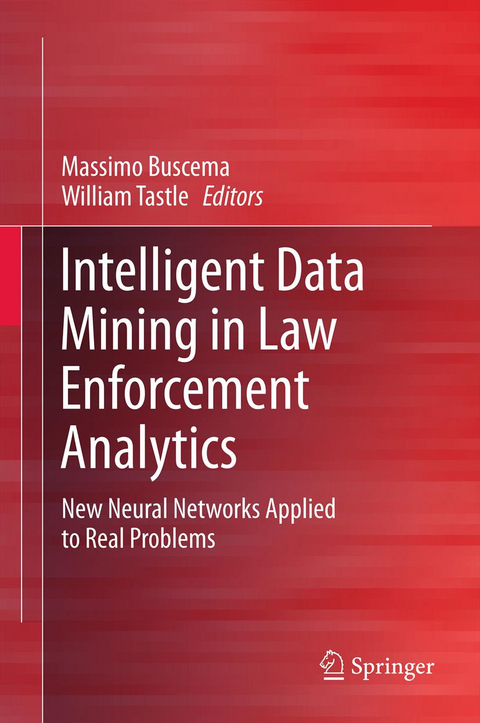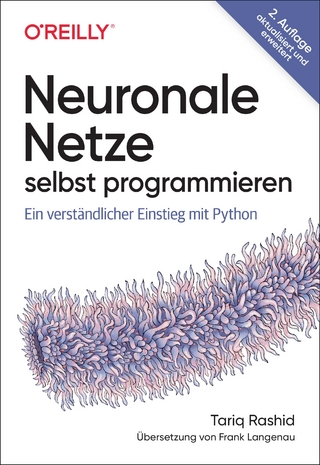
Intelligent Data Mining in Law Enforcement Analytics
Springer (Verlag)
9789400749139 (ISBN)
Paolo Massimo Buscema is editor on the Editorial Board of various international journals. He is the director of Semeion Research Center of Sciences of Communication, Italy, and Professor of University of Colorado, Dept of Mathematical and Statistical Sciences, CO, USA. He has designed, constructed developed new models and algorithms of Artificial Intelligence. Author of scientific publications on theoretical aspects of Natural Computation, with over 250 titles (scientific articles, essays, and books (23) on the same subject) and over 35 Software Systems used in many university and research Centres. Inventor of 20 international patents. Scientific Director of research projects on the application of artificial intelligence systems in the biomedical field, homeland security and safety (quakes and slides down). William J. Tastle is Professor of Information Systems at a private university in upstate New York, a Research Professor at the University of Iceland, Visiting Scientist at Los Alamos National Laboratory, a Fellow of the Association for Information Technology Processing, and a Research Fellow at Semeion Research Centre of Rome, Italy. His current research interests are in the application of artificial intelligence algorithms to highly complex problems, and the study and creation of measurements involving ordinal and nominal data. His PhD is in Advanced Technology with specialization in Systems Science from the University of New York at Binghamton. He is the retired managing editor of the International Journal of General Systems and an active journal reviewer. He is active in the area of fuzzy information systems.
Dedication.- Preface.- Chapter 1. Introduction to Artificial Networks and Law Enforcement Analytics; William J. Tastle.- Chapter 2. Law Enforcement and Artificial Intelligence; Massimo Buscema.- Chapter 3. The General Philosophy of Artificial Adaptive Systems; Massimo Buscema.- Chapter 4. A Brief Introduction to Evolutionary Algorithms and the Genetic Doping Algorithm; M. Buscema, M. Capriotti.- Chapter 5. Artificial Adaptive Systems in Data Visualization: Pro-Active data; Massimo Buscema.- Chapter 6. The Metropolitan Police Service Central Drug Trafficking Database: Evidence of Need; Geoffrey Monaghan and Stefano Terzi.- Chapter 7. Supervised Artificial neural Networks: Back Propagation Neural Networks; Massimo Buscema.- Chapter 8. Pre-Processing Tools for Non-Linear Data Sets; Massimo Buscema, Alessandra Mancini and Marco Breda.- Chapter 9. Metaclassifiers; Massimo Buscema, Stefano Terzi.- Chapter 10. Auto Identification of a Drug Seller Utilizing a Specialized Supervised Neural Network; Massimo Buscema and Marco Intraligi.- Chapter 11. Visualization and Clustering of Self-Organizing Maps; Giulia Massini.- Chapter 12. Self-Organizing Maps: Identifying Non-Linear Relationships in Massive Drug Enforcement Databases; Guila Massini.- Chapter 13. Theory of Constraint Satisfaction Neural Networks; Massimo Buscema.- Chapter 14. Application of the Constraint Satisfaction Network; Marco Intraligi and Massimo Buscema.- Chapter 15. Auto-Contractive Maps, h Function and the Maximally regular Graph: A new methodology for data mining; Massimo Buscema.- Chapter 16. Analysis of a Complex Dataset Using the Combined MST and Auto Contractive Map; Giovanni Pieri.- Chapter 17. Auto Contractive Mapsand Minimal Spanning tree: Organization of Complex datasets on criminal behavior to aid in the deduction of network connectivity; Giula Massini and Massimo Buscema.- Chapter 18. Data Mining Using Non-linear Auto AssociativeArtificial Neural Networks: The Arrestee Dataset; Massimo Buscema.- Chapter 19. Artificial Adaptive System for Parallel Querying of Multiple Databases; Massimo Buscema.-
| Zusatzinfo | XVIII, 518 p. |
|---|---|
| Verlagsort | Dordrecht |
| Sprache | englisch |
| Maße | 155 x 235 mm |
| Themenwelt | Informatik ► Datenbanken ► Data Warehouse / Data Mining |
| Informatik ► Theorie / Studium ► Künstliche Intelligenz / Robotik | |
| Mathematik / Informatik ► Mathematik ► Angewandte Mathematik | |
| Sozialwissenschaften ► Soziologie ► Empirische Sozialforschung | |
| ISBN-13 | 9789400749139 / 9789400749139 |
| Zustand | Neuware |
| Informationen gemäß Produktsicherheitsverordnung (GPSR) | |
| Haben Sie eine Frage zum Produkt? |
aus dem Bereich


